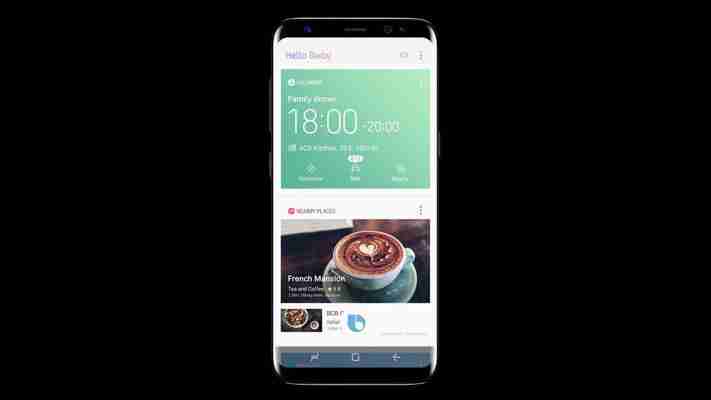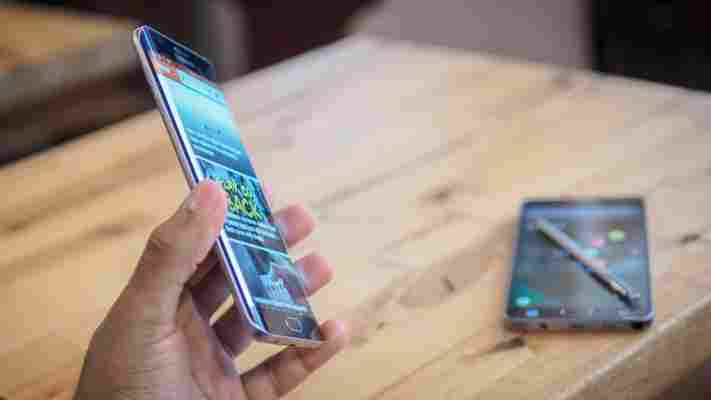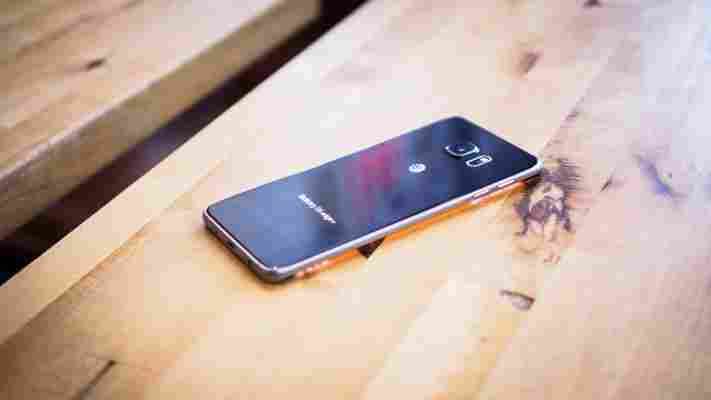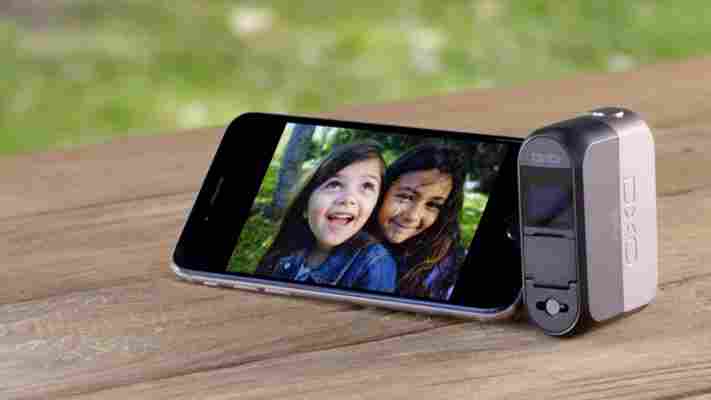One of the key differences between Samsung’s new Galaxy S8 and its previous flagships is the inclusion of a hardware button on the side to invoke Bixby , the company’s new virtual assistant software.

Given that Bixby’s voice features won’t even work when the device launches , you’d be right to want to remap that button to launch other apps , like Google Assistant. That was possible for a bit, but it looks like Samsung is now locking down the button so you can’t reconfigure it.
That’s according to flar2 , the developer behind Button Mapper , an app that lets you remap your phone’s hardware keys for various actions. According to XDA Developers, flar2 noted while updating his app that the Bixby button support no longer worked as Samsung’s latest system update for the S8 intercepts the button’s key events before it reaches the Accessibility Services.
As such, it can’t be accessed by third-party apps to enable actions other than what Samsung determines. The change was confirmed by a Samsung PR representative on Twitter.
https://twitterom/philipberne/status/854020503908089862
With that, Samsung is likely to anger many an S8 customer. It’s understandable that the company will want people to use the dedicated hardware button to access Bixby, but forcing them to use it only for that feels desperate.
We’ve contacted Samsung to learn more and will update this post if there’s a response.
Samsung Galaxy S6 Edge+ Abridged Review: Seriously, just buy the Note 5 (if you can)
Yesterday we published an extensive, 3,000+ word review of the Galaxy Note 5 . Our verdict? It’s pretty much the best phone you can buy anywhere right now if you can live with the size, price tag and limited storage.

We’re trying something a little different with the S6 Edge+ though. Not because that phone isn’t good enough to deserve a full-fledged review, but because honestly, you shouldn’t have to read the same thing twice.


I’ve been using them side by side for a while now, and for most purposes, they’re basically the same phone. The internal specs are exactly identical, and the only differences are outside: one just has a curvy screen, the other has a stylus.
If you want the full nitty gritty of most of what Samsung is offering with the Edge+, head on over to our Note 5 review . If you just want a TL; DR version though, these are the qualities the S6 Edge+ largely shares with the Note 5:
An even more beautiful, high-quality design. The Note 5 is no slouch in the looks department, but the Edge+’s screen still stands out more than pretty much any other display out there due to the curved panel. It’s one of the best looking smartphones ever made, and its the one thing the Edge+ has over the Note 5.
Speaking of displays, a very sharp QuadHD AMOLED screen with accurate but vibrant colors and pure blacks.
An excellent fingerprint sensor that works quickly with just a tap.
Ridiculously good performance powered by Samsung’s Exynos 7240 processor and 4GB of RAM. It seems incapable of significantly slowing down.
Probably the best camera on iOS or Android, with full manual control, RAW support, optical image stabilization and 4k video. The new manual controls help it outdo the smaller S6 models for enthusiasts, but I could find no difference between the Edge S6+’s camera and the Note 5’s.
Useful multi-tasking features, including split screen and windowed modes.
Surprisingly resilient battery life that will have no trouble getting you through a full day of use and 3+ hours of screen on time, depending on what you’re doing (streaming video lasts longer, for instance). It’s the main reason to choose new big Galaxy phones over the smaller S6 models.
Very quick charging if your battery does die; we’re talking 0-90% in an hour or less.
While the Note 5’s distinguishing factor is the S-Pen – more useful than ever now that it works without unlocking the device – the Edge+’s features are really just clever software disguised as hardware advantages.
You can swipe in from the edge to pull up favorite contacts or apps, for instance. It’s a neat feature, but it’s also something several free apps on the Google Play store can essentially replicate, even if swiping does feel a little nicer on the curved screen.
The most unique feature is the ability to set different tickers on one of the edges for quick access to information like notifications, weather, RSS feeds or Twitter trends. It’s nifty, but I hardly ever used it given I own a smartwatch, though your mileage may vary. There’s a pretty limited selection of tickers, and it’s also a bit slow to launch – about a full second or two after initiating the gesture (there’s no always-on option).
None of these are as hard to replicate as the S-Pen, and though some people will probably appreciate the built-in functionality regardless, the S6 Edge+ also has some distinct disadvantages compared to the Note 5 too.
For one, it’s significantly harder to hold. The Note 5 felt surprisingly good in hand thanks to its narrow frame and curved back, and it was even fairly usable with the included one-handed mode activated by tapping on the home button thrice. But the the Edge S6 has a flat back and curved screen, essentially creating the opposite effect in the hand.
Those with larger hands may not have to worry as much, but in my medium-sized ones it was difficult to keep a solid grip on with on, and I frequently felt at risk of dropping it (and what’s point of a case on a phone this pretty?). To pick it up from a table, you need to pinch at the sides. For me, it’s a strictly two-handed device.
But most importantly, the S6 Edge+ costs more. Pricing varies from carrier to carrier, but in the US, the Edge+ ranges from about $770-$820.
As such, I can’t reasonably recommend the Edge+ over the Note 5. That is, if you can buy the Note 5 – Samsung has apparently deemed Europeans unworthy of the almighty stylus.
If you’re not in the old world, then the legitimate usefulness of the S-Pen and high cost of the Edge+ make the Note 5 a no-brainer. The Edge+ is to the Note 5 what the steel version of the Apple Watch is to the Sport – except in this case, a little less functional.
But that’s the thing: we humans don’t always make the most rational choices. Sometimes we just want the shiniest thing, and that’s okay too. The Edge+ is a conversation starter, and nothing else looks like it.
If you like the curved screen, have no interest in a stylus or can afford the extra $100 or so, go for it. You’re still getting the second best phone around.
DxO’s iPhone camera attachment promises DSLR quality shots in your pocket
DxO One , a new attachment for your iPhone, claims it’ll bring DSLR-quality photos to your smartphone and tablet.

The new gadget resembles those popular old Sony Handycams and attaches to the bottom of your iPhone or iPad via the Lightning port to add an extra higher-quality camera.
In the tiny 2.65-inch, 108-gram device, you’ll get a 1.8/f lens on a 1-inch, 20 megapixel sensor, as well as an onboard MicroSD slot. The company claims that this means it can capture high-resolution, good quality images even in low light.


The camera pairs with a free iPhone app that allows full manual control over the DxO hardware, including aperture, shutter speed and ISO, as well as 1080p video.
Images are saved in a new RAW format that the company touts as “SuperRAW” which is four RAW images captured and merged together when connected to a Mac or PC.
If you’re sold already by the allure of DSLR-quality shots — I love the idea of a pocketable, high-quality camera — the DxO ONE will set you back a solid $599 and comes with licenses for the DxO image processing software.
➤ DxO ONE [DxO]
